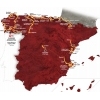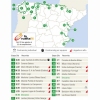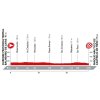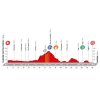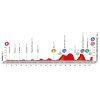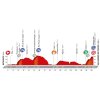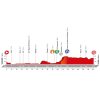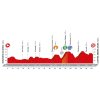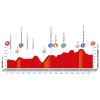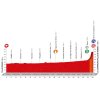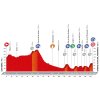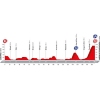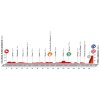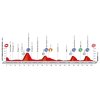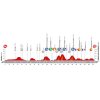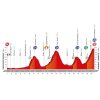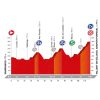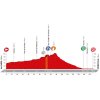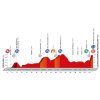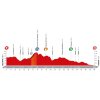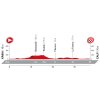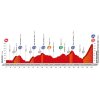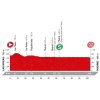As usual, La Vuelta opens with a team time trial. At 29.4 kilometres, it all starts near Ourense, Galicia, in the northwestern part of Spain, near Portugal. The stage leads around the Castrelo de Miño reservoir, while stage 2 leaves from Ourense to head for Baiano. Mostly on flat roads, a small climb with 10 kilometres should not trouble the fast men.
Stage 3 brings the first top finish after a stage from Marín to Mirador de Ézaro. The finish is reached after a 2 kilometres closing climb at 14% with steepest sections of up to 29%. In order to win stage 4, arriving in San André de Teixido (Cedeira), you have to be able to climb also.
Stage 5 leads from Viveiro to Lugo and brings yet another chance for sprinters, albeit a harsh climbs could shake up the finale, while the pack will be traversing the middle mountains in stage 6 and stage 7.
Racing the rolling roads of Castilla y León, stage 8 looks like nothing special until the closing climb to La Camperona looms – 8.3 kilometres at 7.5% with a steepest section at 20%. Stage 9 to Naranco is for the climbers also, while stage 10 leads to the magnificent Lagos de Covadonga after a 12.2 kilometres closing climb at 7.2% with a maximum grade at 17.5% just under the top. A rest day might bring some relief, but in stage 11 it is all systems go again with a top finish in Peña Cabarga (18%).
Stage 12 is tailor made for escapees with excellent descending skills. The race passes through the midde mountains to be concluded with a fast 13 kilometres drop into Bilbao, capital of cycling mad Basque Country. The next challenge takes the riders to Urdax (Navarra), while stage 14 leads to the renowned Col d’Aubisque. Stage 15 goes to Formigal/Sarrios, a ski resort near the French border. The closing climb in the Aragonese Pyrenees is familiar from the 2013 Vuelta when young Warren Barguil powered to one out of two victories in that year’s Vuelta.
After two flat races in the first week stage 16 brings another chance for the fast men, and the same goes for stage 18. In between is the harsh mountain challenge in stage 17, leading to a 4 kilometres closing climb with brutal grades fluctuating between 15% and 22%. Stage 19 brings a flat individual time trial to Calpe, while the last top finish of the 2016 Vuelta a España lies in the Sierra de Aitana. Stage 20 is marked by a 22.3 kilometres closing climb at 5.5%.
The closing stage leads from Las Rozas de Madrid, shortly Las Rozas, to Madrid. As the crow flies those places are 20 kilometres apart.
So all in all the riders face ten top finishes: Ézaro (stage 3), San Andrés de Teixido (stage 4), La Camperona (stage 8), Naranco (stage 9), Lagos de Covadonga (stage 10), Peña Cabarga (stage 11), Aubisque (stage 14), Formigal (stage 15), Mas de Costa (stage 17) and Alto de Aitana (stage 20).
Vuelta a España 2016: Route maps, height profiles, and more
Click on the images to zoom
